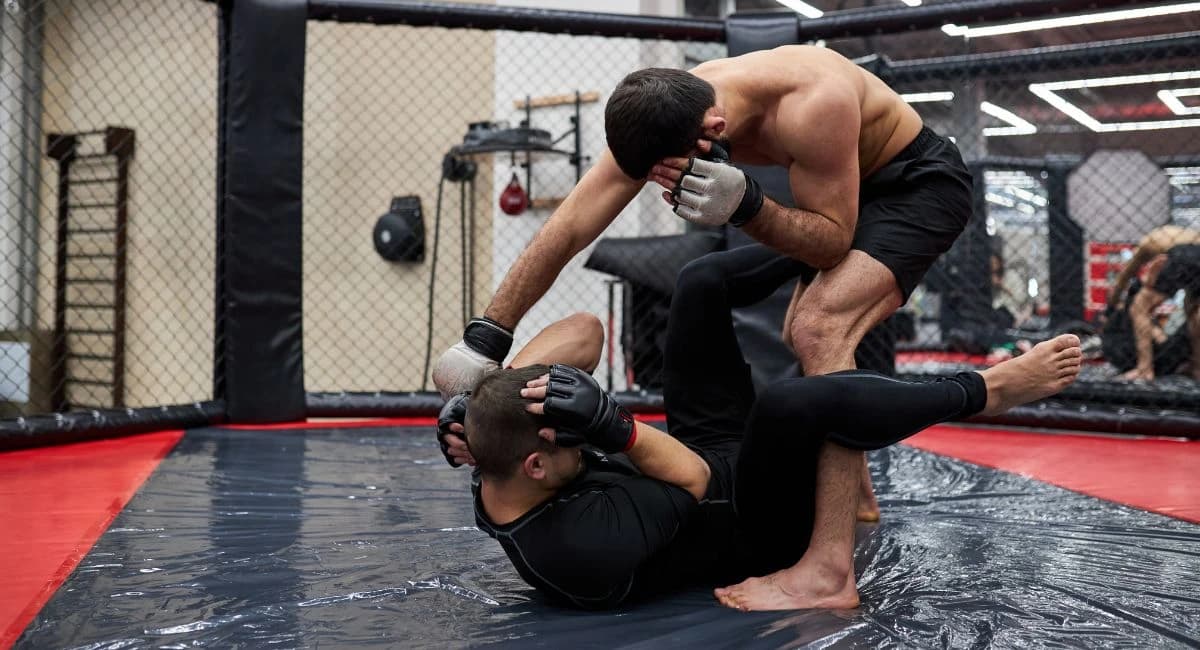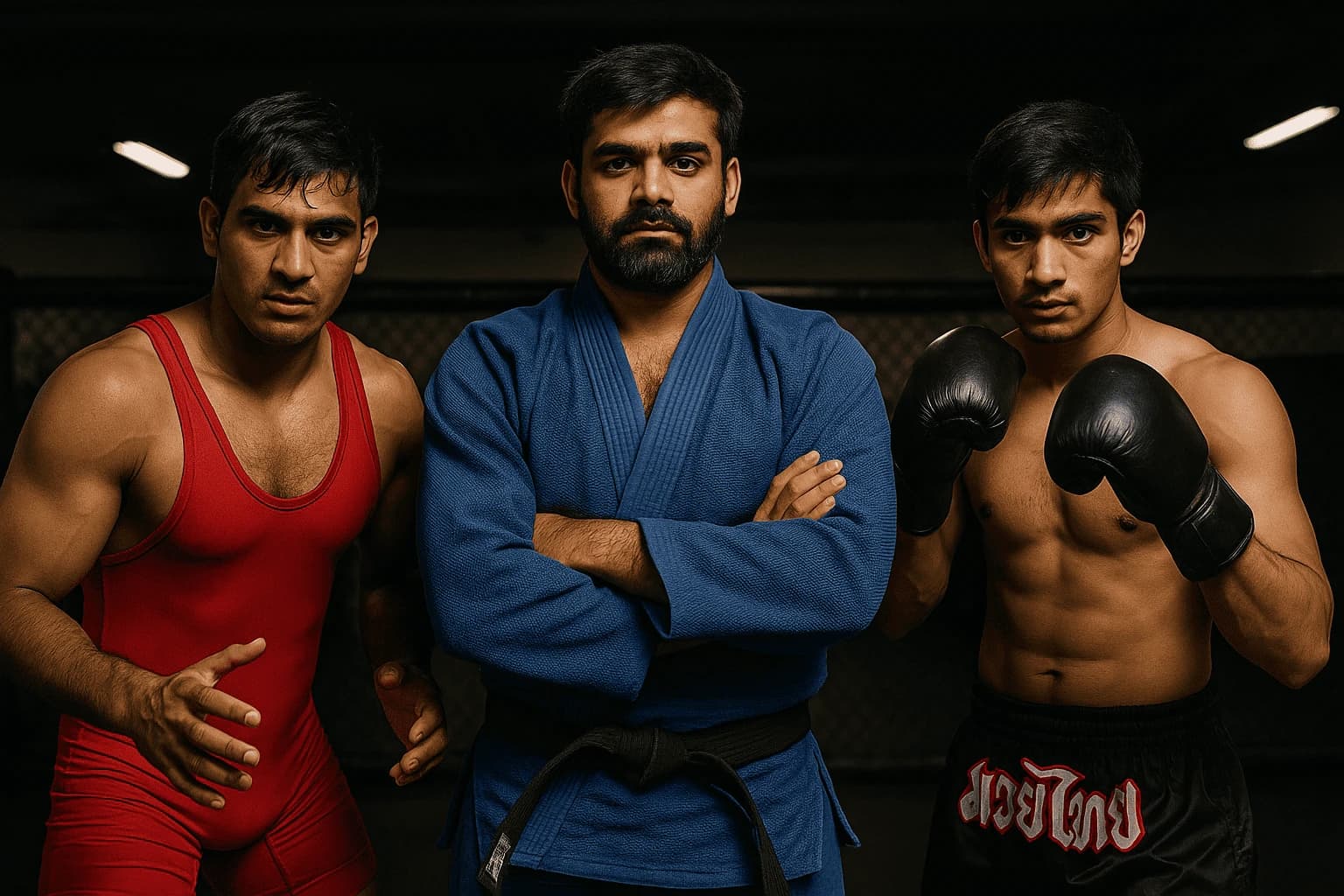© 2025 Info SportsbyTETRA SEVEN

* All product/brand names, logos, and trademarks are property of their respective owners.
Mixed Martial Arts (MMA) is now one of the fastest-growing sports in the world. From the UFC’s flashy shows in Las Vegas to packed stadiums in Abu Dhabi, MMA is everywhere. But one of the most surprising places where it’s booming is South Asia—a region known more for cricket than cage fights.
In the past ten years, countries like India, Pakistan, Bangladesh, Sri Lanka, and Nepal have witnessed a huge rise in MMA. Fighters from small towns and big cities are entering the cage, training seriously, and dreaming big. This article will take you through how MMA came to South Asia, why it’s growing so fast, and what the future looks like for this exciting sport.
Mixed Martial Arts is a combat sport that combines different fighting styles like:
· Boxing
· Wrestling
· Jiu-jitsu
· Muay Thai
· Karate
· Taekwondo
The sport became globally famous in the 1990s when the UFC (Ultimate Fighting Championship) was founded in the USA. At first, it looked brutal—almost like street fighting—but over time it became more professional, with rules, weight classes, and safety standards.
By the 2000s, the UFC and other promotions like Bellator and ONE Championship started showcasing MMA as a world-class sport.
South Asia is a region full of fighters—not just in the ring but in daily life. People here deal with poverty, pressure, and struggle. MMA became attractive because it gave many a path out of hardship.
Let’s break it down country by country.
India, with over 1.4 billion people, is a massive market for any sport. MMA started growing here in the 2010s.
Key Milestones:
· Super Fight League (SFL) was launched in 2012, co-founded by Bollywood actor Sanjay Dutt. It gave Indian fighters a platform to compete professionally.
· Fighters like Ritu Phogat, a former wrestling star, joined ONE Championship and brought international attention to Indian MMA.
· Training gyms started popping up in cities like Delhi, Mumbai, Bangalore, and Hyderabad.
Why It’s Growing:
· Indian youth are health-conscious and fitness-focused.
· The internet and YouTube made it easy to watch UFC fights and learn techniques.
· Bollywood’s interest in MMA (with movies like Sultan and Brothers) created awareness.
In Pakistan, sports infrastructure has been a challenge, but that didn’t stop MMA from growing. In fact, the lack of structure made it more raw and real.
Key Milestones:
· Bashir Ahmad, known as the “Father of Pakistani MMA,” brought the sport to Pakistan. He founded Paktani Top Team (PTT) and helped launch PAK MMA.
· He also fought in ONE Championship, showing that Pakistanis can compete at the highest level.
· Events like Fight Fortress, VCL (Valor Championship League), and Mixed Martial Arts Pakistan gave local fighters platforms to compete.
Fighters to Watch:
· Ahmed Mujtaba – Competing in ONE Championship.
· Uloomi Karim – Popular local fighter.
· Ehtisham Karim – Young and rising talent.
Why It’s Growing:
· The sport gives direction to street fighters and underprivileged youth.
· Martial arts gyms are affordable compared to cricket or football academies.
· Social media helps promote fighters even without mainstream coverage.
Bangladesh entered the MMA scene later than India and Pakistan, but its fighters are showing promise.
Growth Factors:
· The establishment of gyms like Team KO Fight Studio and Art of War Bangladesh.
· Local fight nights and amateur competitions.
· Collaboration with international trainers for seminars and training camps.
· The youth in Bangladesh are passionate and hungry for opportunities. MMA gives them a stage to prove themselves.
Sri Lanka has always had a strong martial arts background in boxing and karate. MMA is now building on that base.
Nepal, a country known for its brave Gurkha soldiers, has a fighting spirit in its people. MMA gyms like Nepal MMA and Team Nepal Warriors are rising in popularity.
Both countries are sending fighters to compete in regional championships, and some are even preparing for bigger platforms like ONE Warrior Series and Road to UFC.
The Role of Gyms and Coaches
MMA’s growth in South Asia wouldn’t be possible without the rise of MMA gyms and dedicated coaches. In every country mentioned, small gyms started by former martial artists became training grounds for the next generation.
· Cross Train Fight Club (India)
· Pakistani Top Team (Pakistan)
· Team KO (Bangladesh)
· Combat Fitness (Nepal)
· Lion’s Den MMA (Sri Lanka)
These gyms not only teach MMA but also create a community. Fighters often live, eat, and train together. The coaches become like parents, guiding their students both inside and outside the cage.
Several reasons explain why MMA is clicking with South Asian audiences and athletes:
Unlike scripted wrestling or slow-paced sports, MMA is real, fast, and emotional. South Asians connect with stories of struggle and sacrifice.
People now want to be fit—not just thin. MMA offers full-body training and self-defense skills. Young men and women are joining MMA gyms even if they don’t want to fight professionally.
Even if TV networks don’t show MMA, YouTube, TikTok, and Instagram do. Short knockout clips go viral. Fighters build fan bases online.
Traditional martial arts like karate and taekwondo have always existed in South Asia. MMA is seen as the next level—modern and global.
Despite the growth, there are still many problems to solve.
Most fighters pay for their own training, travel, and diet. Sponsorship is rare, and government support is almost zero.
There is little regulation. Fake promotions or unsafe fight events happen. Fighters don’t always get medical checks or fair pay.
Many good fighters can’t travel for fights because of visa issues, high travel costs, or lack of contacts.
Few clinics understand MMA injuries. A fighter with a broken hand or torn ligament may not get the right treatment, ending their career early.
Despite the challenges, several South Asian fighters have reached international platforms:
· Ritu Phogat (India) – Former wrestler and ONE Championship star.
· Gurdarshan Mangat (India/Canada) – Fights in ONE Championship.
· Bashir Ahmad (Pakistan) – The pioneer of Pakistani MMA.
· Ahmed Mujtaba (Pakistan) – Known for his thrilling fights in ONE.
· Roshan Mainam (India) – Young and exciting flyweight fighter.
These athletes show that it’s possible for South Asians to shine in global MMA.
One of the most exciting changes is the rise of women in MMA. In a region where gender roles are often strict, MMA is breaking barriers.
· Ritu Phogat (India) – From wrestling family to MMA star.
· Anita Karim (Pakistan) – The first Pakistani female to win an international MMA bout.
· Sabita Maharjan (Nepal) – Strong female role model from Nepal.
More gyms are now welcoming women, and parents are becoming more open to letting daughters train.
The backbone of MMA in South Asia is local promotions. These are events where fighters gain experience before going international.
· Matrix Fight Night (India)
· PAK MMA Fighting Alliance (Pakistan)
· Dhaka Fight Night (Bangladesh)
· Nepal Warriors Championship
· Colombo Fight Night (Sri Lanka)
These shows are helping develop talent, build fan bases, and attract sponsors.
The potential is huge. Here’s what needs to happen next:
MMA should be recognized as an official sport with funding and safety rules.
Brands should support fighters and gyms by offering them scholarships and sponsor their events. This will encourage and help fighters.
Exchange programs with international gyms can improve skills.
More local sports channels should show MMA events and fighter documentaries. Currently, international channels are giving more coverage.
Physios, dieticians, and injury specialists should be available for fighters.
By 2030, South Asia could be a global hub for MMA. Here’s what we may see:
· A South Asian MMA League, similar to IPL or PSL.
· Multiple fighters from India, Pakistan, and Bangladesh in the UFC top 10.
· MMA tourism, where foreigners come to train in South Asia.
· More female champions leading the way.
MMA in South Asia is more than just fighting. It’s a tool for:
· Empowerment – Giving youth confidence and purpose.
· Unity – Bringing together people of different religions, classes, and regions.
· Change – Creating role models who rise from nothing to something.
Whether it’s a young boy in Lahore training barefoot in a basement, or a girl in Mumbai throwing punches on a rooftop, the journey from the streets to the cage is just getting started.
MMA has taken over South Asia—not with billion-dollar deals, but with heart, grit, and the will to fight.

15 June 2025
No comments yet. Be the first to comment!